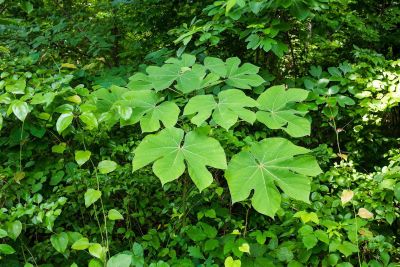About Firmiana Parasol Trees
The odds are, you’ll either love or hate parasol trees. Growing Chinese parasol trees definitely gives your garden a dramatic, tropical flavor. This is a curious-looking deciduous tree with the scientific name Firmiana simplex. The trees are also called Firmiana parasol trees. Firmiana parasol trees have thin, green bark and large, lobed leaves. Each leaf can get to 12 inches (30.5 cm.) across, and offers as much shade as the parasol from which the tree gets its common name. Chinese parasol trees shoot up to 50 feet (15 m.) tall, with a spread up to 20 feet (6 m.). In summer, the flowers appear. They are panicles of yellow-green blossoms, up to 20 inches (51 cm.) long. Firmiana parasol trees produce attractive seed pods in fall. At that time, the trees’ leaves blaze yellow before dropping in winter.
How to Grow a Chinese Parasol Tree
These plants thrive in U.S. Department of Agriculture plant hardiness zones 7 through 9. If you live in one of those zones, you may be able to start growing Chinese parasol trees. Parasol trees grow fast, so be sure to choose a site with enough room. You can start growing Chinese parasol trees in a location in full sun or partial sun, although they are most attractive in a full sun site. Site the tree in an area that is protected from the wind. Chinese parasol tree care is not difficult. The trees, though exotic looking, are very tolerant. They will grow just fine in acidic or alkaline soil. They grow in clay, sand, or loam, but need a well-drained location. Provide adequate, even generous, amounts of water when the trees are young. As they get older, they are drought resistant. If you start growing Chinese parasol trees, keep in mind that you’ll need to watch the branch size. Good Chinese parasol tree care requires that you limit branch size to no larger than half the diameter of the trunk to ensure a good tree attachment.
